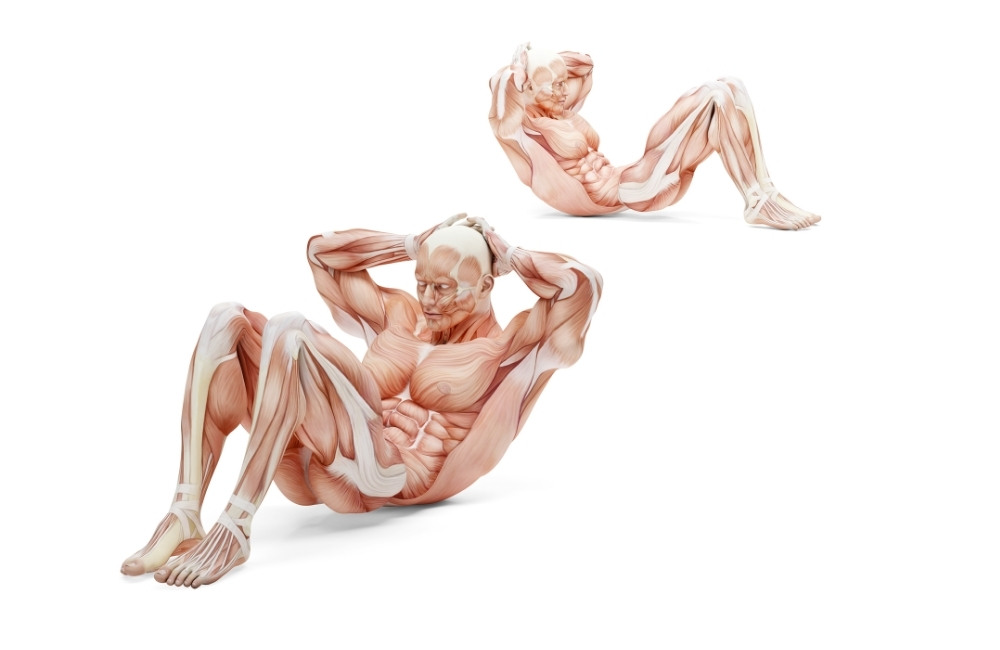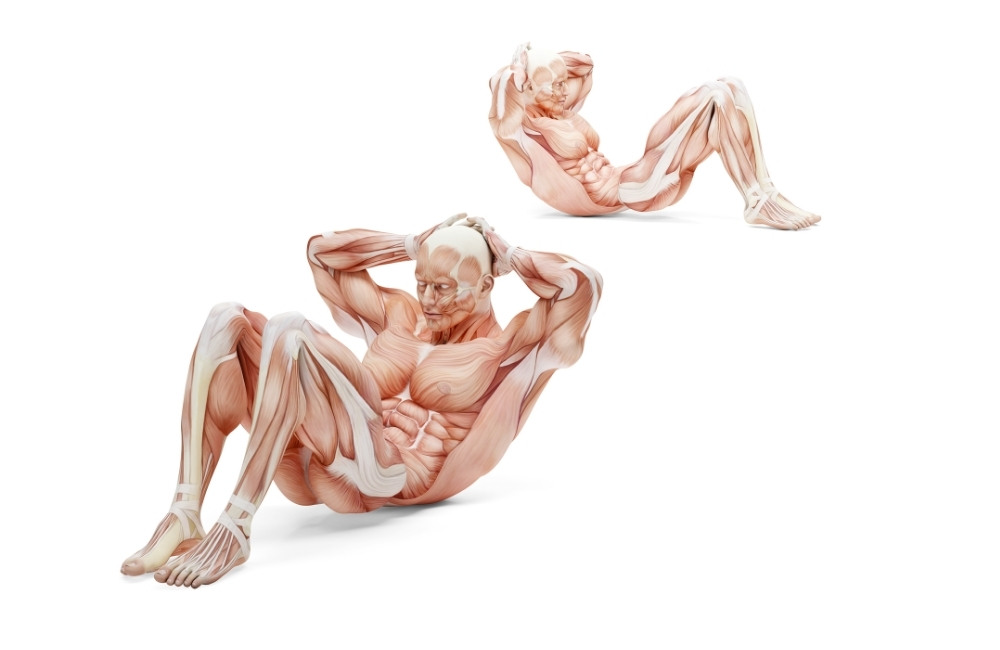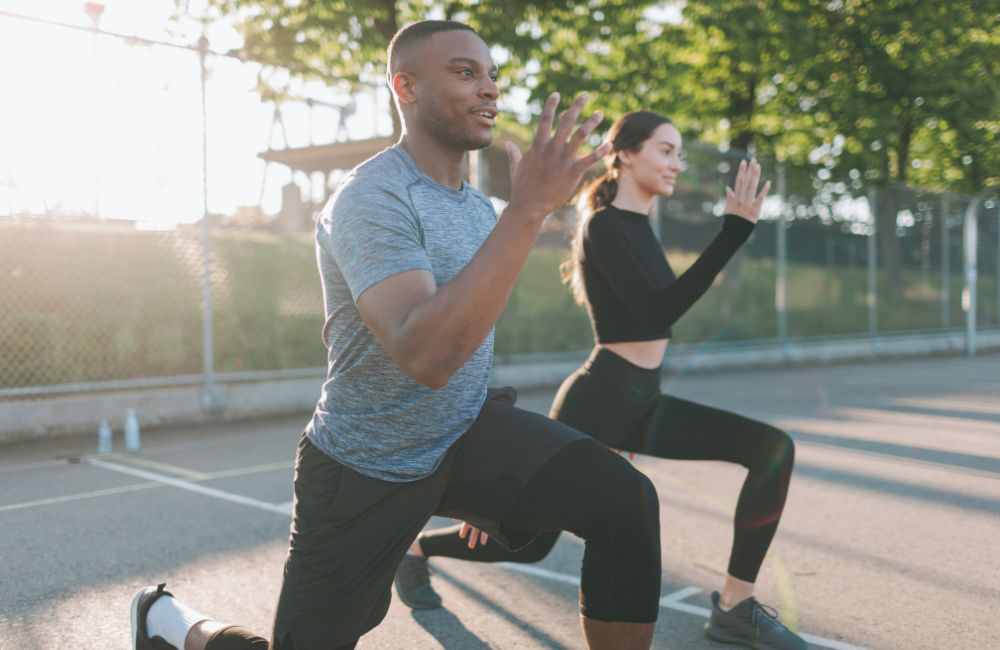
If there was a pill that would lower your risk for all of the most common diseases, how fast would you drive to the pharmacy to get it?
Unfortunately, there isn’t a pill that accomplishes this task. That being said, adequate weekly exercise serves to do:
- Lower your risk of heart disease.
- Improve blood sugar levels.
- Increase bone strength.
- Raise endurance.
- And improve your health in tons of other ways.
If this is all true, why don’t more people exercise?
Well, there are many reasons why people avoid exercise. But whatever your excuse is, you need to find the motivation to get your workouts in!
In this article, we will address some of the most common barriers to exercise. Then, we’ll provide some of the best exercise suggestions for those who are just dipping their toes into physical activity.
You may also like:
The 3 Best Exercises That’ll Reinvent Your Body in Your 60s and Beyond
The Only Ab Exercises You’ll Ever Need for Six-Pack Abs, According to Science
Why Doesn’t Everyone Exercise?

This question has baffled health professionals for years. If people understand how important physical activity is for their health, why on Earth won’t they do it!?
In this section, we’ll review some of the most common barriers to exercise.
No Time
One of the most common reasons people cite for not exercising is a lack of time.
Granted, it’s hard to find time to work out. This is especially true for those who wear many different hats throughout the day. For example, you may have a spouse, kids, coworkers, parents, and friends who are all vying for your attention. Between all of these commitments, it can be hard to devote time to exercise.
However, you really don’t need to spend much time working out in order to be healthy.
The minimum requirement for good cardiorespiratory health, according to many health organizations, is 150 minutes of moderate-intensity cardio per week. This can be easily broken down into a brisk, 30-minute walk, 5 days a week.
No matter who you are, I’ll bet you can fit that into your routine!
The recommendations for resistance training and flexibility differ slightly between sources. However, as long as you are getting a few days of these modes each week, you’ll be doing wonders for your health.
No Equipment
Some people say that they can’t exercise because they don’t have the right tools.
Truthfully, you need very little equipment to get a great workout. For cardio, you can easily go out for a walk, run, or swim (depending on where you live).
When it comes to resistance training, you can simply perform pushups and squats, and you’ll hit most of the major muscle groups of your upper and lower body.
It’s that simple!
No Motivation

You may be hitting a rough patch in your life. If this is the case, you may simply not have the motivation to invest in your health.
However, you should remember that taking the time to exercise will improve your life in so many ways. Exercise has been shown to improve mental health, decrease the risk of many diseases, and increase the overall quality of life.
I understand if you’re hesitant to add exercise to your life right now. But I promise, once you make it part of your routine, you will feel so much happier and healthier!
How to Start Exercising
First and foremost, you need to remember that you will not achieve all of your health goals in a single day. The improvements seen from exercise occur slowly, over months or years. Therefore, you need to start with a very basic, easy activity.
From there, you may decide to progress further or maintain your current level of fitness. As long as you are happy, and you are hitting your minimum exercise requirements each week, you’re good to go!
Find Something You Like
There are so many different ways to exercise.
For cardio, you can jump rope, participate in jazzercise, take a boxing class, or do pretty much anything that gets your heart beating.
When it comes to resistance training, you can use bands, weights, kettlebells, bodyweight, or something else entirely.
For flexibility, you can stretch on your own, take a yoga class, or participate in some partner stretches with a friend.
The above examples are just a tiny fraction of the options available to you. Therefore, you should experiment with all different types of exercise to see what you like best. I guarantee you’ll find something that is rewarding for you!
Workout With a Buddy

Committing to a new exercise plan can be hard and scary. As is true with anything, having a friend by your side makes the process easier.
You can join a gym with a friend, schedule daily walks with your neighbors, or follow a fitness DVD with the family. Whatever you do, just make sure it’s a fun, group activity!
On the other hand, for some people, working out alone is the best way to organize their thoughts and overcome their fears about the new lifestyle change. This is perfectly OK too. If you prefer to fly solo, go for it!
Hire a Trainer
Trainers serve many different roles for their clients. Often, they are a sounding board for any fears their clients may have. Also, they take the guesswork out of the exercise process.
While trainers can be a considerable expense, they are well worth the investment. After all, if they can help you get in shape, it’s money well-spent.
What Are You Waiting For?
If you’re waiting for the perfect opportunity to start exercising, you’re going to be waiting for a long time.
The best way to start a new exercise habit is to just get up and do it. As soon as you possibly can, lace up your shoes and go for a 30-minute walk.
Your body will thank you.
Works Cited
- Ruegsegger, G. N., & Booth, F. W. (2018). Health Benefits of Exercise. Cold Spring Harbor perspectives in medicine, 8(7), a029694. https://doi.org/10.1101/cshperspect.a029694
- Hoare, E., Stavreski, B., Jennings, G. L., & Kingwell, B. A. (2017). Exploring Motivation and Barriers to Physical Activity among Active and Inactive Australian Adults. Sports (Basel, Switzerland), 5(3), 47. https://doi.org/10.3390/sports5030047
- Yang Y. J. (2019). An Overview of Current Physical Activity Recommendations in Primary Care. Korean journal of family medicine, 40(3), 135–142. https://doi.org/10.4082/kjfm.19.0038


